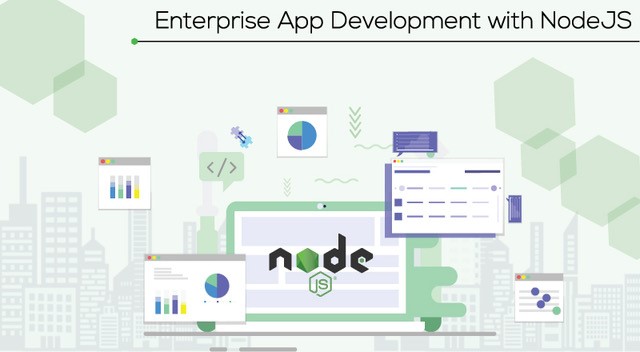Yibai Insights
Explore the latest trends, news, and insights from around the world.
Node.js: Where Non-Blocking Meets Non-Stop Fun
Discover the thrill of Node.js with non-blocking magic! Dive into endless fun and unleash your coding potential today!
Understanding Non-Blocking I/O: The Heart of Node.js
Understanding Non-Blocking I/O is crucial for harnessing the full power of Node.js, a platform designed for building scalable network applications. Unlike traditional blocking I/O operations, which halt program execution while awaiting the completion of a task, non-blocking I/O allows the server to handle multiple requests simultaneously. This asynchronous approach enables Node.js to manage a high volume of concurrent connections efficiently, making it ideal for applications that demand real-time data processing, such as chat applications and online gaming.
At the core of Node.js's architecture is the event-driven model. When a non-blocking I/O operation is initiated, Node.js registers a callback function and continues executing the rest of the code. Once the I/O operation completes, the callback is invoked without blocking the main execution thread. This model not only improves performance but also simplifies the codebase, allowing developers to write cleaner, more efficient code. To fully leverage the benefits of non-blocking I/O, it's essential for developers to grasp the concepts of callbacks, promises, and async/await, which facilitate asynchronous programming in Node.js.

How Node.js Handles Multiple Connections: A Deep Dive
Node.js is designed to handle multiple connections simultaneously, making it an ideal choice for building scalable network applications. At the core of its architecture is the event-driven, non-blocking I/O model, which allows Node.js to perform asynchronous operations. This means when a request is made, Node.js can manage it without needing to wait for other operations to complete, freeing up the event loop to handle new incoming connections. Essentially, rather than using a multi-threaded approach like traditional servers, Node.js operates on a single-threaded event loop, which is capable of managing large numbers of connections with minimal overhead.
When a connection is established, Node.js registers the request and invokes a callback function once the processing is completed, ensuring efficient use of resources. This is achieved through the use of callbacks, promises, and asynchronous functions. For instance, when you make a database call, Node.js sends the request and continues executing other code while waiting for the response. This not only enhances performance but also makes it easy to scale applications without overwhelming the server. Overall, Node.js provides an elegant solution for handling multiple connections, making it a preferred choice for real-time applications like chat applications and online gaming.
Why Choose Node.js for Your Next Project? Exploring Its Benefits and Use Cases
Node.js has rapidly gained popularity as a powerful platform for building scalable and high-performance applications. One of its most significant benefits is its non-blocking, event-driven architecture, which allows developers to handle multiple connections simultaneously without sacrificing performance.
In addition, the use of JavaScript on both the client and server sides simplifies the development process, enabling developers to share code and libraries. This leads to increased productivity and faster development cycles, making Node.js an excellent choice for your next project, especially in real-time applications, REST APIs, and microservices.
Another reason to consider Node.js is its large ecosystem of modules available through the Node Package Manager (NPM). With thousands of packages at your disposal, developers can quickly integrate functionalities and reduce development time. Whether you're building a chat application, an online gaming platform, or a RESTful API, Node.js provides the flexibility and tools required for modern web development.
In conclusion, when you choose Node.js for your next project, you harness the power of asynchronous programming, a vast library of resources, and the ability to create seamless, real-time user experiences.